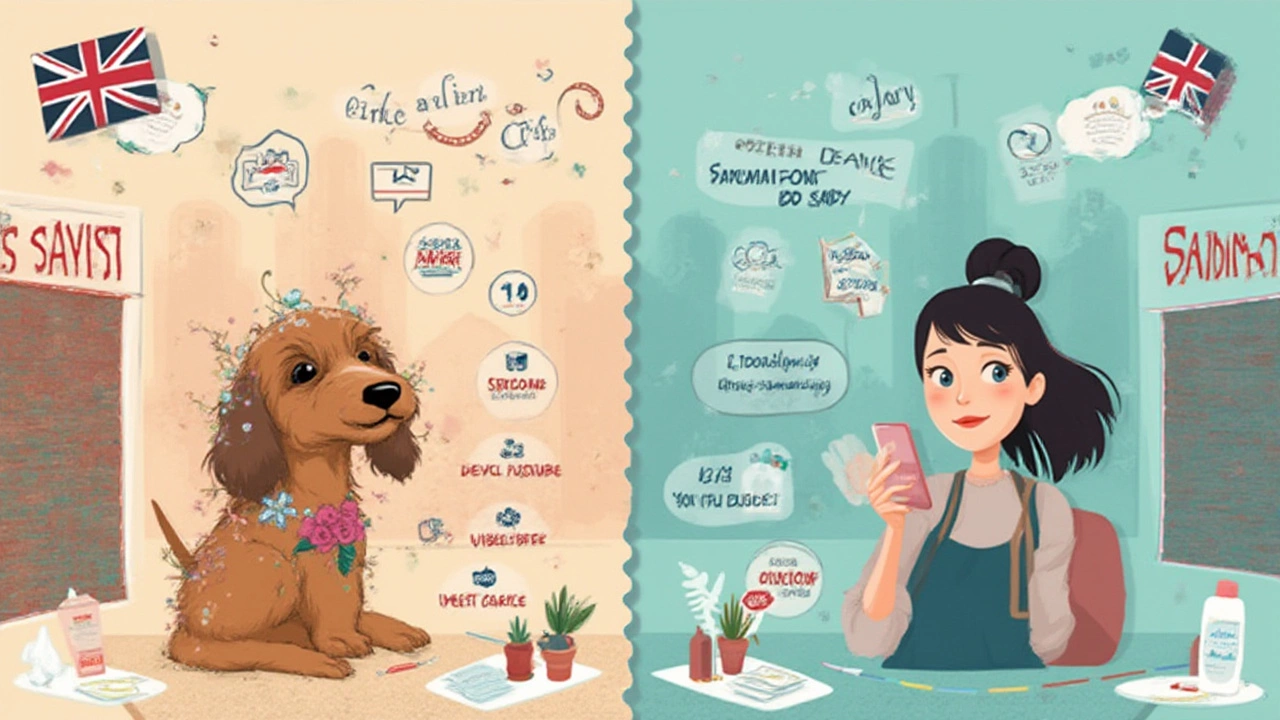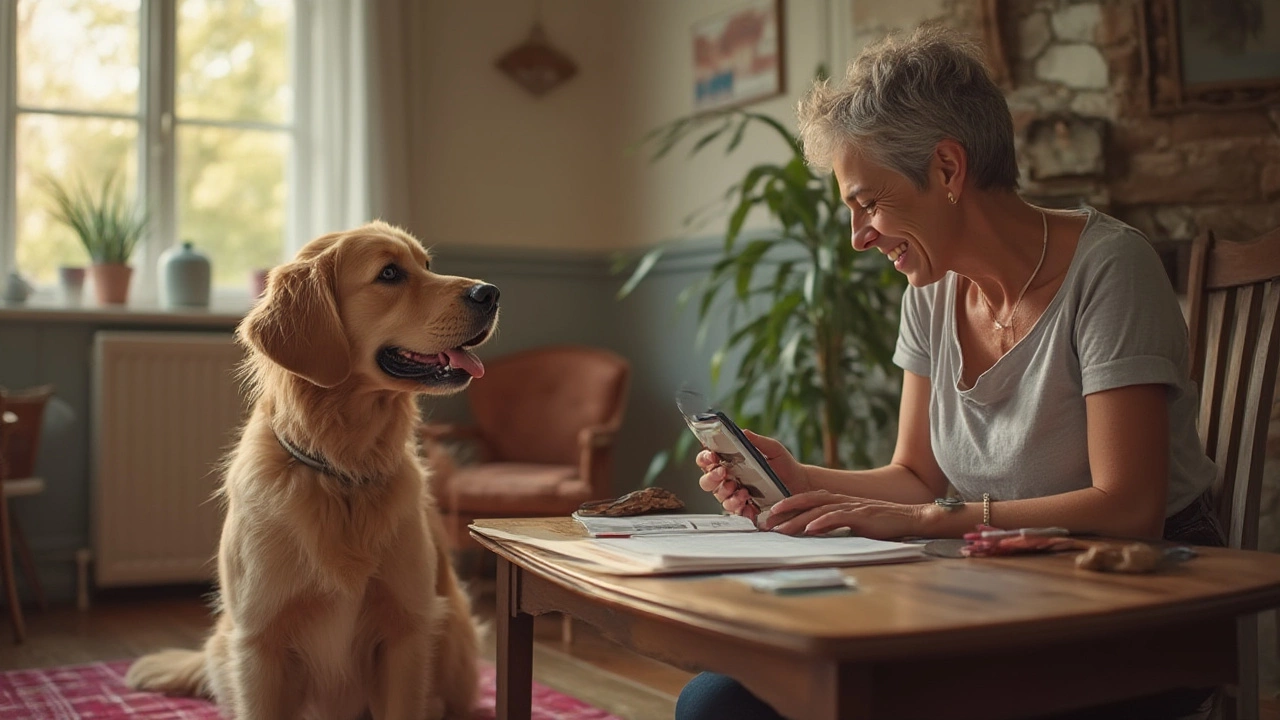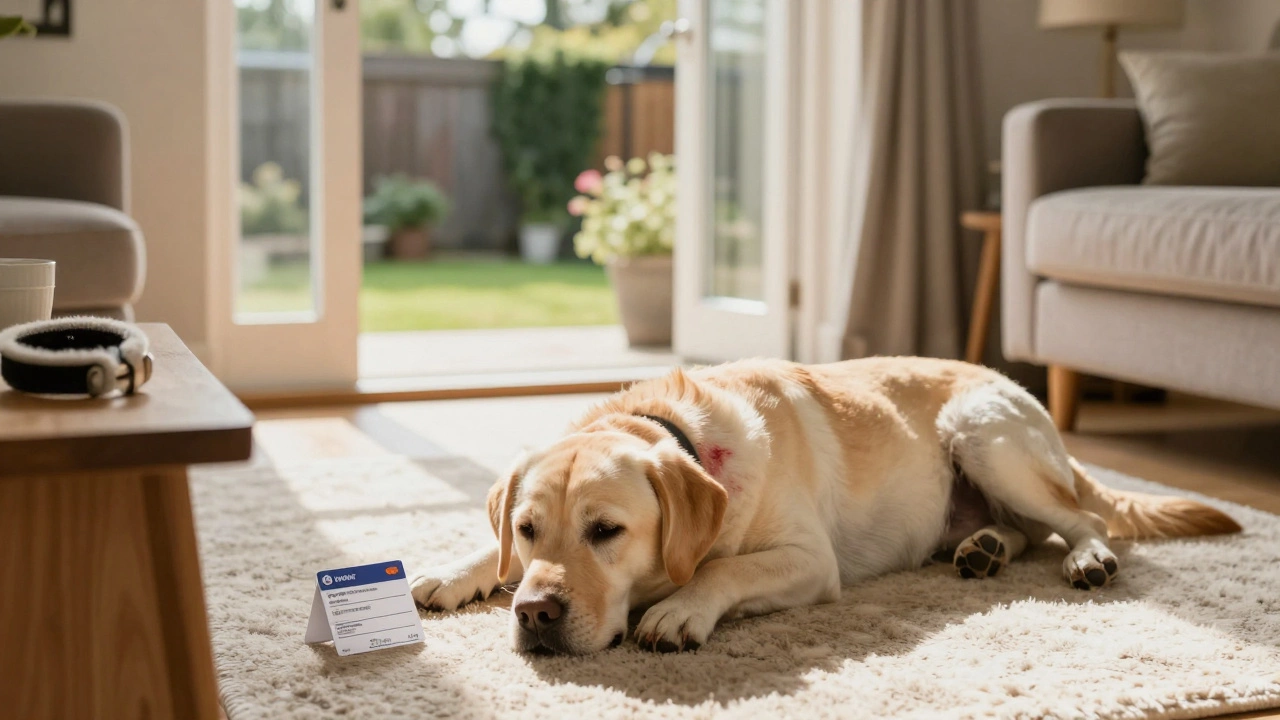Think you’re spending too much at the groomer, or maybe getting away with a steal? The numbers might just surprise you. Grooming a dog isn’t just about making them look adorable. It’s about health, your couch’s survival, and sometimes your reputation at the dog park. Trends in pet care have sky-rocketed since 2020, and grooming costs have jumped too. A recent 2024 survey by the American Pet Products Association showed the average U.S. dog owner now spends $330 a year just on grooming. That’s almost a dollar a day, not counting all the treats and fancy shampoos you grab while you’re at it. And if you thought grooming was only for Poodles and show dogs, spoiler alert: even your neighbor’s scruffy mutt is hitting the salon more and more.
What Goes into the Cost of Dog Grooming?
Dog grooming isn’t just a “bath and out the door” deal. The price tag covers a whirlwind of different tasks, each one aimed at making your dog look, feel, and smell their best. First off, there’s the bath. That’s not just water and some household soap – we’re talking pet-safe shampoos, conditioners, and treatments that target everything from itchy skin to fluffy fur.
Next up, drying. If you’ve ever tried to remove all the moisture from a Golden Retriever’s coat, you’ll know exactly why dryers at the groomer’s seem to roar like jet engines. Then come the grooming steps you can’t skip: brushing out tangles, snipping out mats, and dealing with shedding fur. A slicker brush or de-shedding tool in professional hands can work magic – you just can’t get the same effect at home with a $5 brush.
Don’t forget nail trimming! That quick clip is essential for keeping paws healthy, and a groomer will get it done fast and safely, without the risk of cutting too far, which can cause real pain and bleeding. Some breeds need their ears plucked or cleaned to stave off infections, while breeds like poodles and schnauzers might need a full body trim or a specialty cut, adding extra time and cost.
On top of that, if your dog squirms, snaps, or just can’t sit still, the groomer might add a handling fee for nervous or aggressive dogs, as these appointments take longer. And if your buddy's fur is one big mat, the cost can jump because of the extra work. Pricing depends on breed, size, coat type, and even where you live. In a big city, you’ll probably pay more than someone booking appointments in a small town.
The table below sums up typical costs you can expect for popular breeds, based on data from PetGroomer.com (2024):
| Breed/Size | Bath + Brush | Full Groom (includes cut/style) |
|---|---|---|
| Small (Shih Tzu, Yorkie) | $30-$45 | $50-$80 |
| Medium (Cocker Spaniel) | $40-$55 | $60-$95 |
| Large (Golden Retriever, Husky) | $55-$80 | $85-$120 |
How Often Do Most Owners Pay for Grooming?
Frequency is where grooming costs can really add up. Plenty of short-haired dogs only need a good grooming session every few months, but for any dog with more complex coats, it’s a whole different story. Poodles, Bichons, and Doodles need visits every 4–6 weeks to avoid matting and keep that teddy bear look. Even Labs and Beagles—a couple of classic low-maintenance breeds—need a good bath and shed control a few times a year.
Here’s something most folks overlook: seasonal changes. Spring and fall are prime times for dogs to shed. Owners of breeds like German Shepherds or Huskies often find themselves vacuuming fur drifts and booking extra sessions just to keep up. And then there’s the messy stuff like rolling in mud, meeting a skunk, or running through burrs. Suddenly, you’re a regular at the groomer’s, no matter your dog’s breed.
Now, not everyone splurges on monthly professional care. Some people invest in home grooming kits, but most admit they still book at least one or two pro sessions a year just to get it right. That’s especially true if their dog’s nails start clicking on the hardwood or the fur gets too wild to handle without a meltdown. According to a 2024 Statista report, 34% of US dog owners use professional grooming four times a year, while 22% visit more than six times annually.
Urban owners are trending toward more frequent appointments—think about the rise of mobile grooming vans and luxury salons popping up in cities. And don’t forget, health issues sometimes demand more grooming: allergies, sensitive skin, or fleas can all send your dog to the stylist more often than planned. Budget-wise, multiply your average session fee by how often you go. Suddenly, that $330 annual average might seem like a minimum, not a splurge.

DIY Grooming: How Much Do You Truly Save?
Many folks have toyed with the idea of becoming their dog’s personal stylist. The lure is obvious: less money spent at the groomer, no appointment necessary, and you get bragging rights for a job well done. But what does it really cost to groom your dog at home? Let’s break it down.
Start with the basics—a good set of clippers runs from $40 to $150, depending on quality. You’ll need a slicker brush, nail clippers, a sturdy comb, some shears, pet-friendly shampoo, conditioner, and a dryer (don’t even think about using your hair dryer; it can burn your dog’s skin). Add in things like ear cleaner if you’ve got a floppy-eared breed. Altogether, an initial setup for home grooming can hit $200 or more, just for the basics that’ll last a year or two.
Time is another big factor. You’ll spend 1–2 hours for a full grooming session, longer if your dog is anxious or wiggly. And while you might save per session, one botched cut or a clipped nail that bleeds can mean an emergency vet visit—a nasty surprise on your bill. Plus, not all dogs will sit for you the way they do for a pro with years under their belt and a table that adjusts to the perfect height.
If your dog has a simple coat and you’re careful, you can save a bundle after the first few sessions cover your initial investment. On the flip side, many owners bounce back to the groomer after a DIY disaster, wallet in hand, just hoping for a fix. The key is knowing your dog’s coat and your own comfort zone. Some owners get comfortable trimming between professional sessions, which keeps fur manageable and costs down. It’s about balance, not perfection.
Hidden and Extra Costs You Didn’t See Coming
It’s not just about baths and blowouts. Extra fees can pop up fast. Got a dog that hates the blow dryer, nips at the shears, or needs sedation for a safe trim? Add $10–$50 more for special handling or behavioral fees. Then there’s the dreaded ‘dematting’ surcharge—if your dog’s coat is a tangled mess, groomers may spend an extra hour working through knots, and you’ll pay for their time (sometimes $1 per minute!).
Some salons charge more for “express” groom sessions if your dog can’t be around other pups. Want teeth brushing, flea dips, specialty shampoos, or even color treatments? That’s all extra. There are seasonal add-ons, too: muddy spring days can spike demand, and many shops raise prices around the holidays when everyone wants their pup to look perfect for family photos.
And don’t forget tipping. The unwritten standard is 15–20% of the bill, especially if your groomer manages miracles or deals with a nervous pup. Then there are things like parking fees or travel surcharges if you book a mobile groomer. If you’re a new dog owner, the first appointment usually costs more because the groomer needs extra time to get your dog comfortable and figure out the right routine.
Health issues can crank up the cost, too. Dogs with allergies might need hypoallergenic shampoos and medicated treatments—some of which aren’t included in the baseline fee. Senior dogs or those with mobility issues might need two groomers or extra equipment, which ups the price yet again.

Smart Strategies for Saving on Dog Grooming
Don’t panic—there are ways to keep grooming costs under control. Start with regular brushing at home, which prevents mats and cuts down on shedding. Invest in a quality brush matched to your dog’s coat—slicker brushes for long hair, rubber curry brushes for short coats. Keep up with nail trims, since the longer you wait, the more likely they’ll split and cause pain (and cost more to fix).
Ask your groomer for advice on easy at-home maintenance. They’ll often suggest the right products, or show you basic techniques for cleaning ears or brushing teeth, which extends time between pro visits. Book your dog early in the morning or on slower weekdays; sometimes, shops offer discounts for off-peak appointments. Some chains and local shops offer loyalty punch cards and email newsletters with coupons—don’t be shy about asking.
If you’re flexible, try a grooming school. Supervised students charge much less and often do solid work (just allow some extra time for the learning curve). Pair up with other owners for group discounts, or look for package deals that include bath, brush, cut, and nail trim at a single price. Try bundling: some mobile groomers give a break if you schedule several dogs at once in the same neighborhood.
For long-haired dogs, keep trims simple—a “puppy cut” is easier to maintain and usually cheaper than a breed show cut. Keep up with maintenance at home, and only book a full session for big seasonal sheds or before special occasions. Above all, keep notes on what works and when you got the best results. Over time, you’ll know what you can handle at home and what’s best left to the pros.
At the end of the day, grooming costs aren’t going away—but a bit of strategy makes even the poshest pups affordable. And after all, what’s a few bucks when your best friend struts out looking like a superstar?



